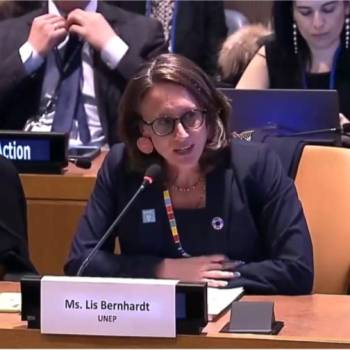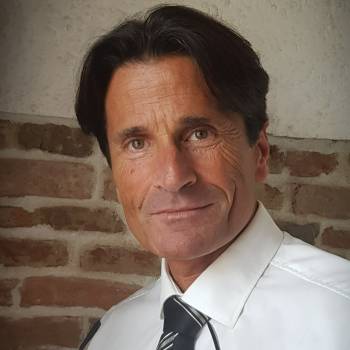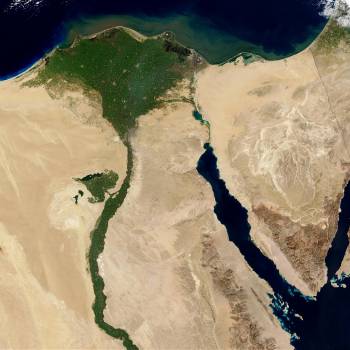
Nuclear force is very intense, about 140 times greater than electric force. And it's about a hundred trillion times more intense than the force of gravity, which will cause a nice injury if we fall from the top of a ladder from a height of a few meters.
These forces bind the protons and neutrons of atoms together, giving stability to matter. But protons are positively charged, so they repel each other. There comes a time, where we've collected a lot of them, where neutrons that work like glue from atomic nuclei can no longer hold them together, and those nuclei tear apart releasing nuclear force, which produces a physical labor equivalent to immense energy.
Now, just as electrical forces can be manipulated very easily, nuclear forces are essentially random. Therefore, in order to release their energy, we can only bring together many atoms of unstable nuclei so that the neutrons released in one nucleus cause other nuclei to break up, to start fission. A chain reaction then occurs which, if allowed to function, produces an atomic bomb and, if controlled, an atomic reactor which releases enormous amounts of energy in the form of heat.
And there is the problem of controlled nuclear energy: the heat produced by the rupture of nuclei, by fission. It is curious that 20th century technology works like a locomotive of the early 19th century: it produces useful energy by heating water, the steam of which moves turbines.
The problems of nuclear power plants
Although there are many types of nuclear power plants, the ones that have been established as viable are those that have a huge tower near the reactor in the form of a hyperbolic surface. In it, the water that captured the heat from the fission slides along the walls, vaporizing and releasing that heat into the atmosphere.
The problem with nuclear power plants is their cooling. This must be done with neutral, abundant and inexpensive fluids, as immense quantities are needed and it is essential that they do not contaminate the environment in which the site is located. Basically water. Nuclear forces are the subject of very sophisticated physics research, but for practical use they function like coal.
They do not produce carbon dioxide (CO₂) but generate a considerable amount of waste which remains unstable, that is to say, they emit part of the particles alpha (two protons with two neutrons), beta (electrons) or gamma rays. These particles and rays are very energetic and, by acting on animal tissues, modify them, producing direct death or changes in cells that can lead to cancer.
Thus, nuclear energy, which does not produce climate change, and is not expensive in its operation, pollutes in its action on life and requires a lot of water for its operation. And here the two problems that exist for its widespread use appear very clearly.
Fear of an accident
As we have just seen during these pandemic months, produced by one of the countless viruses that surround our lives, human beings are reacting irrationally, viscerally to attacks on life. The SARS-CoV-2 virus has killed many people, but if you look at it in perspective, there aren't that many. In Spain, nearly 100,000 people have died to date, out of a group of 47 million: 0.21%. Mortality (especially infant) in human societies before 1800 could be 10%.
Civilian nuclear energy has caused an almost negligible death toll in a tiny number of accidents. But images of atomic (rather nuclear) bombs in Japan and test explosions on the Pacific Islands, as well as a number of films on the subject, have introduced an irrational fear of this energy into the human mind. .
Now the fear is totally justified if things are done wrong. A civilian nuclear reactor cannot explode like an atomic bomb, but it can melt and release many radioactive substances. This requires that the plants be designed with very high safety measures, making the design and construction time of a gigawatt plant about 10 years. Not to mention the very high cost: around 10 billion euros. Who will invest these amounts taking into account social rejection?
Fear means that power plants cannot be installed near population centers: in a world where densely populated areas are increasing. There are few places with water to plant them.
Water consumption and other requirements
Nuclear power plants require a huge amount of water and guaranteed water all year round for cooling. This means that in a country with steppes, like Spain, there aren't many places to build them.
In addition, power plants demand earthquake-free areas: we don't want an earthquake to crack the shields that keep radioactive particles inside. This eliminates much of Andalusia.
Nuclear power plants must be built in areas that allow easy and quick evacuation: this eliminates Galicia and the Cantabrian Sea due to its mountainous topography.
In both plateaus and in the Ebro valley, there is little water guaranteed all year round.
If we do, therefore, the sum of the price, the rather long duration of design and manufacture, the lack of water, the visceral fear and the vagaries between acceptance and rejection of the project, we come to the conclusion that the Nuclear power, which would be ideal for combating climate change and keeping the price of electricity under control, cannot be considered a viable alternative today. And if this is not the case today, we are not helping to curb climate change.
A 1 gigawatt photovoltaic power plant costs around € 1 billion. Such a site can be completed in a year, poses no risk to human life and does not need water. The same goes for a wind power plant. The first option requires a lot of land, and Spain is almost empty. In fact, with 10,000 km² of photovoltaic plants, Spain would have all the energy necessary to cover its needs. And Spain has about 500,000 km².
The price of photovoltaics in Spain represents a third of the price of nuclear electricity in France, already known to be cheap. “Spain is the place to be when it comes to solar energy, one of the most attractive countries in the world in this area,” says Loreto Ordonez, Managing Director of Engie Spain. Despite the Covid crisis, the country installed, in 2020, 5 gigawatts of solar and wind power (the equivalent of 3 EPR reactors), more than twice as many as in France. Spain has set itself the objective, from 2030, of producing 74% of its electricity using renewable energies.
Therefore, the social and commercial response to the nuclear problem in Spain is clear.
Sources:
Prof. Antonio Ruiz de Elvira Serra from the Applied Physics Department of the University of Alcala - Spain.
Posted on 2021-10-18 11:20








Comments